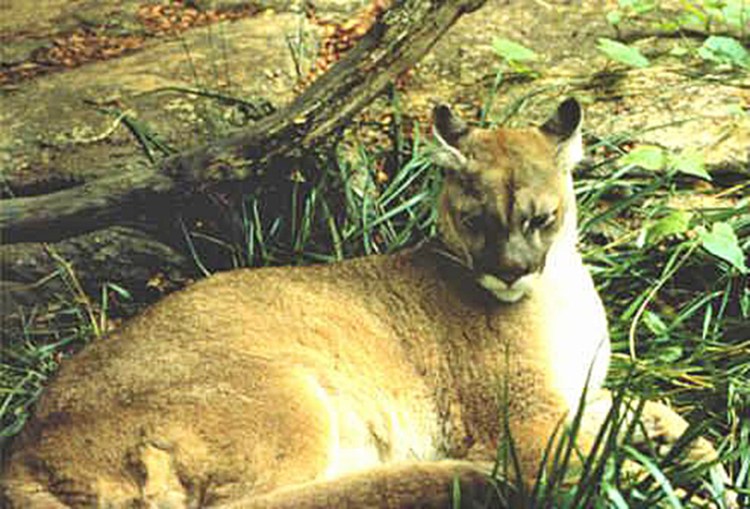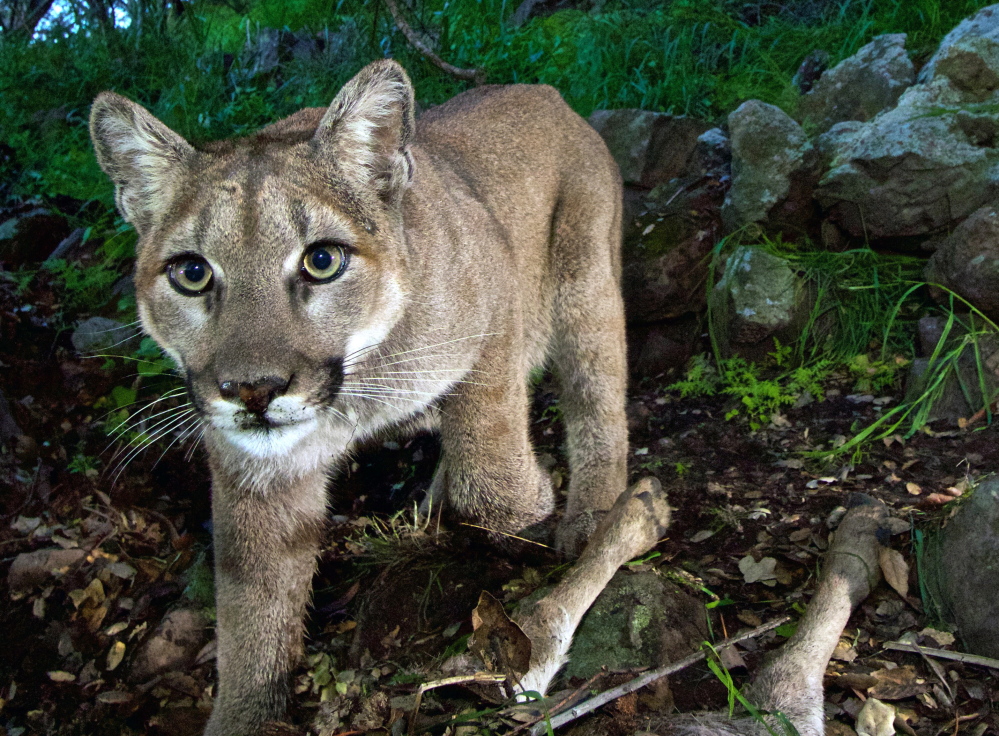The U.S. Fish and Wildlife Service on Tuesday proposed removing the eastern cougar from the endangered species list, declaring that the big cats have likely been extinct for at least 70 years.
Recent sightings of cougars in the Northeast are believed to be migrating western mountain lions, Florida panthers or captive animals that were released into the wild, wildlife biologists said.
“We recognize that people have seen cougars in the wild in the eastern U.S.,” said Martin Miller, northeast chief of endangered species. “Those cougars are not of the eastern cougar subspecies.”
The predators are known across the U.S. by a variety of names: cougar, mountain lion, puma, panther or catamount. The eastern cougar subspecies was listed as endangered in 1973.
Most of the eastern cougars disappeared in the 1800s as European settlers killed them to protect themselves and their livestock and as forests were harvested and the cougar’s primary prey, white-tailed deer, nearly disappeared, officials said. The last records of eastern cougars are believed to be in Maine in 1938 and in New Brunswick in 1932.
But that doesn’t mean cougars are gone for good from the East.
Western mountain lions have been expanding their range. In 2011, a solitary young male cougar traveled about 2,000 miles from South Dakota through Minnesota, Wisconsin and New York before being killed on a Connecticut highway. A cougar of unknown origin was also killed in Kentucky in December 2014, officials said.
The forests of Maine, New Hampshire, Vermont and upstate New York have ideal cougar habitat, should the western cougars continue to expand eastward, officials say.
Michael Robinson of the Center for Biological Diversity said the extinction of eastern cougars has disrupted the forest ecosystem and allowed large populations of white-tailed deer to thrive.
“This is a somber moment to think about what the land under our feet used to be like, and what roamed here,” Robinson said in a statement from New Mexico. “It should also be a clarion call to recover pumas and all of our apex predators to sustainable levels to help rebalance a world that is out of kilter.”
There’s some debate over whether the eastern cougar subspecies is a distinct population following researchers’ findings that suggested all U.S. cougars share a similar genetic makeup.
But since that’s still up for debate, the federal agency proceeded as if eastern cougars are a distinct population that used to have a range over 21 states from Missouri to Michigan to Maine to the Carolinas, said Mark McCollough, an endangered species biologist for the U.S. Fish and Wildlife Service in Maine.
The proposal to remove the eastern cougar from the endangered species list was being published in the Federal Register and will be available for public comment for 60 days before the agency proceeds with final rule making. The proposal does not affect the status of the Florida panther, which will remain listed as endangered.
Send questions/comments to the editors.




Success. Please wait for the page to reload. If the page does not reload within 5 seconds, please refresh the page.
Enter your email and password to access comments.
Hi, to comment on stories you must . This profile is in addition to your subscription and website login.
Already have a commenting profile? .
Invalid username/password.
Please check your email to confirm and complete your registration.
Only subscribers are eligible to post comments. Please subscribe or login first for digital access. Here’s why.
Use the form below to reset your password. When you've submitted your account email, we will send an email with a reset code.